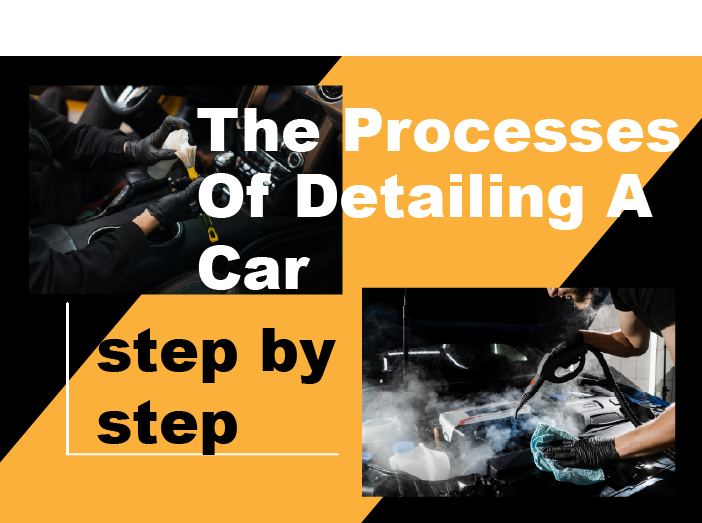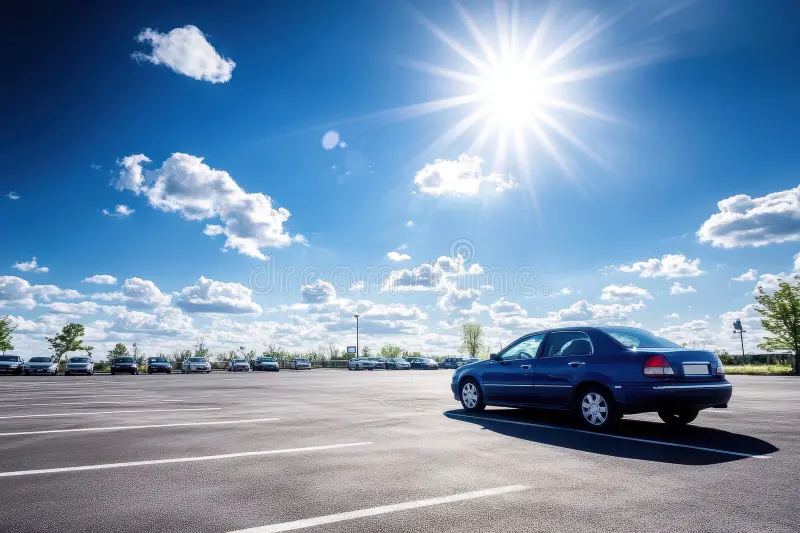Discover how each season affects your car and learn simple, science-backed ways to protect it year-round—from pollen to road salt.
Ever looked at a detailing quote and thought, "Wait... how is this more than a car wash?" You're not alone. A lot of people think detailing is just a fancy word for a better rinse. But trust me — if you've ever had a true professional detail your vehicle, you know it's not even close.

What Actually Happens During a Professional Detail (And Why It Costs What It Costs)
Ever looked at a detailing quote and thought, "Wait... how is this more than a car wash?" You're not alone. A lot of people think detailing is just a fancy word for a better rinse. But trust me — if you've ever had a true professional detail your vehicle, you know it's not even close.
This blog is going to break down exactly what goes into a real professional detail. Step-by-step. No fluff. We'll cover the tools, the products, the time, the skills, and yes — why it actually costs what it does. And we’ll do it in a way that makes sense, even if you’ve never touched a foam cannon in your life.
I’ll also throw in some real mistakes I’ve seen, product recommendations, and tips that’ll help you understand what separates a proper detail from a quick wash-n-go. So buckle up. This is the real deal.
Detailing is about cleaning, restoring, and protecting. A proper detail aims to bring your car as close to factory condition as possible — inside and out. Unlike a drive-through wash, every inch of the vehicle gets attention. From the paint surface to the air vents to the inside of your door handles.
Think of it like a deep-clean for your car... with a little bit of love and a lot of technique.
Here’s a basic outline of what happens during a full professional detail — though it can vary a bit based on the condition of the car, the package you choose, or the skill of the detailer.
1. Pre-Inspection and Prep We always start with a walkaround. We look for damage, note paint condition, check the wheels, trim, and interior wear. This isn’t just for show — it lets us plan how aggressive or gentle we need to be.
2. Wheels & Tires First Most pros start from the ground up. Wheels are some of the dirtiest parts of the car — brake dust, road grime, tar. We use dedicated wheel cleaners, iron removers, soft brushes, and separate towels just for this step. A good example: P&S Brake Buster.
3. Foam Pre-Wash / Snow Foam This is where it gets fun. A foam cannon is used to cover the car in thick soap foam. Why? Because we want to lift and loosen dirt before touching the paint. Touching dry or dirty paint = scratches. We let the foam dwell, then rinse it all off.
4. The Two-Bucket Hand Wash One bucket has soap, one has clean water for rinsing the mitt. This reduces the risk of scratching the paint. We use high-lubricity shampoos like CarPro Reset to gently remove anything the foam didn’t.
5. Decontamination (Iron Remover + Clay Bar)You can’t always see what’s stuck to your paint — things like industrial fallout, brake dust, and tree sap. So we use an iron remover that turns purple when it reacts with metal. Then we follow up with a clay bar (or clay mitt) to glide across the surface and pull out embedded stuff. After this step, the paint feels smooth like glass.
6. Paint Correction (If Included) This is where things get real. Paint correction removes swirls, light scratches, and oxidation using polishers, pads, and compounds. It’s not a quick process — even a single-stage correction can take 2–4 hours. Multi-stage corrections can take 8+ hours.
7. Surface Prep and Protection Once the paint is corrected, we prep it with an alcohol-based cleaner to remove any oils. Then we add protection. This could be wax, sealant, or a ceramic coating depending on what the client chooses. A true ceramic application requires careful handling, time, and a curing period — it’s not like wiping on wax.
8. Interior Deep Clean The inside gets the same level of love. Vacuuming every inch, using compressed air to blow out tight areas, shampooing carpets and seats, steam-cleaning crevices, and conditioning leather or plastics. We often use products like Koch-Chemie Pol Star for delicate but effective interior cleaning.
9. Final Touches Glass is cleaned streak-free. Trim is dressed. Door jambs are wiped. Tires are shined. We do one last walkaround to check for missed spots, leftover residue, or anything that doesn’t meet our standards. We don’t stop until it’s right.
Now that you see the process, the pricing starts to make more sense. But let’s break it down:
So no, it’s not “just a wash.” It’s a skilled service using high-end products and hours of attention. It’s also the kind of thing that, when done right, can restore thousands of dollars in value to a car.
While we're here, here are some things we see all the time:
If you’re DIYing, try to avoid these. And if you’re hiring a pro, make sure they’re not doing them either.
At Z’s Clean, our process follows the exact steps above. We don’t rush, and we don’t take shortcuts. You’ll always know what service you’re getting, what’s included, and how long it’ll take.
We bring our own water, power, and products. We offer mobile detailing all across San Diego, and we make sure every job reflects our standard. We’re not here to sell you a bunch of fluff — just real detailing that delivers real results.
If you want to explore options, check out our Interior Detail or Ceramic Coating pages for more.
Professional detailing is part art, part science, and all care. It’s not just about making your car look good — it’s about protecting it, preserving it, and feeling proud every time you get behind the wheel.
So the next time someone says, “Isn’t that a bit much for just a wash?” — send them this blog.
You’ll both be glad you did.
Stay clean,Z
Get car care tips and updates you’ll actually use.
Because it’s not even the same service. A wash is quick and surface-level. Detailing involves deep cleaning, specialized tools, paint correction, and hours of labor to restore and protect your vehicle.
Anywhere from 3 to 12 hours, depending on the vehicle’s condition, service level, and whether you’re getting things like paint correction or ceramic coating.
If your car has visible swirls, hazing, or faded shine, paint correction will bring back clarity and gloss before applying any protection. Wax only hides issues temporarily — correction actually fixes them.
.jpg)
Discover how each season affects your car and learn simple, science-backed ways to protect it year-round—from pollen to road salt.

The sun looks great at the beach — less great on your paint. Learn how UV and heat cause fading, oxidation, and clear-coat failure, plus simple habits to protect your car in coastal Southern California.